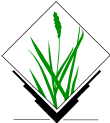| 29 | | New: |
| 30 | | * G72:d.legend.vect - Displays a vector legend in the active graphics frame |
| 31 | | * G72:d.frame - Manages display frames on the user's graphics monitor |
| | 29 | Two new modules were added: G72:d.legend.vect, which allows to easily display a vector legend in the active graphics monitor and, G72:d.frame to manage display frames in the user's graphics monitor. Several display modules, especially those related to the cartographic composition from the Map Display, have received major improvements within GSoC 2016. Some of these improvements include: new option to specify length and units in G72:d.barscale, new options to show background and ticks in color scale, possibility to switch to logarithmic legend and options to add title and have more control over labels in G72:d.legend, more symbols available in G72:d.northarrow, |
| | 30 | G72:d.vect and G72:d.vect.thematic come now with a legend tab with various legend-related options: icon_area to represent areas in legend, icon_line to represent lines in legend, legend_label for label to be displayed in legend, -l flag to do not show anything in the legend. Moreover, these two modules now produce a legend file with instructions for G72:d.legend.vect that facilitates its use in the command line or scripts. |
| 33 | | Improved: |
| 34 | | |
| 35 | | * G72:d.barscale - new option to specify length and units, custom label possible (done within GSoC 2016) |
| 36 | | * G72:d.legend - added option to show background, show ticks, more control over labels, added title, possible to switch to logarithmic (done within GSoC 2016) |
| 37 | | * G72:d.northarrow - added rotation option, more symbols available (done within GSoC 2016) |
| 38 | | * G72:d.vect - Legend tab with number of legend-related options (icon_area to represent areas in legend, icon_line to represent lines in legend, legend_label for label to be displayed in legend, -l flag to do not show anything in the legend) |
| 39 | | * G72:d.vect.thematic - Legend tab with number of legend-related options (icon_area to represent areas in legend, icon_line to represent lines in legend, legend_title for heading of the section in the legend) |
| 40 | | |
| 41 | | All display modules for vector maps, namely G72:d.vect and G72:d.vect.thematic, now produce a legend file with instructions for G72:d.legend.vect if `GRASS_LEGEND_FILE` environmental variable is specified (applied in GUI in the background, can be used directly in the command line or scripts). |
| | 32 | #! --> SCREENSHOTS |
| 78 | | One of the most important additions to the temporal framework |
| 79 | | * G72:t.rast.algebra - Apply temporal and spatial operations on space time raster datasets using temporal raster algebra |
| 80 | | * G72:t.rast3d.algebra - Apply temporal and spatial operations on space time 3D raster datasets using temporal 3D raster algebra |
| 81 | | * G72:t.vect.algebra - Apply temporal and spatial operations on space time vector datasets using temporal vector algebra |
| 82 | | |
| 83 | | * G72:t.rast.what - Sample a space time raster dataset at specific vector point coordinates and write the output to stdout using different layouts |
| | 68 | One of the most important additions to the temporal framework are the ''algebra'' modules. These modules, namely G72:t.rast.algebra, G72:t.rast3d.algebra and G72:t.vect.algebra, allow to perform temporal and spatial operations on/with space time datasets using the temporal algebra. The temporal algebra provides a wide range of temporal operators and functions, i.e.: temporal relations, temporal selection with or without conditional statements, logical operators, temporal operators, temporal neighbourhood modifiers, among others. A new module to |
| | 69 | sample a space time raster dataset at specific vector point coordinates was also added (G72:t.rast.what). |
| 93 | | Topics index page is shorter and and easier to navigate because it does not link to topics with less than three modules |
| 94 | | Topics pages link to the corresponding keyword at the end of the list (link sending somewhere else right at the beginning of the page was misleading) |
| 95 | | significant documentation improvements for G72:g.gui.modeler, G72:r.in.lidar, G72:v.overlay, G72:v.select and G72:ps.map |
| | 79 | Significant documentation improvements for G72:g.gui.modeler, G72:r.in.lidar, G72:v.overlay, G72:v.select and G72:ps.map #!--> screenshots |
| | 80 | Link to source code and history in manual pages |
| 101 | | libraster: support for new raster data compression methods: NONE, ZLIB, LZ4, BZIP2. Overview: |
| 102 | | Raster map compression set by export GRASS_COMPRESSOR=XXX, with XXX be |
| 103 | | NONE (uncompressed) |
| 104 | | RLE (generic Run-Length Encoding of single bytes) |
| 105 | | ZLIB (DEFLATE, good speed and compression) |
| 106 | | with zlib compression levels (export GRASS_ZLIB_LEVEL=X): -1..9 (-1 is default which is level 6) |
| 107 | | Notes: ZLIB level = 0 tells ZLIB to copy the data as-is from source to destination. In case of CELL maps, the rasterlib itself will then still trim high zero bytes with trim_bytes() which can already reduce the data size considerably, but ZLIB will not compress the data. |
| 108 | | LZ4 (fastest, low compression) |
| 109 | | BZIP2 (slowest, high compression) |
| | 86 | libraster: support for new raster data compression methods: NONE, ZLIB, LZ4, BZIP2. |
